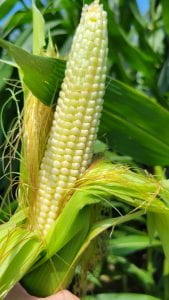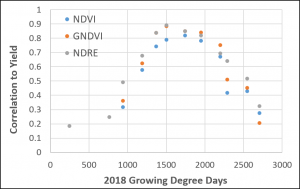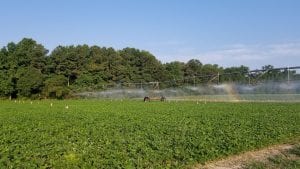Jarrod Miller, James Adkins
Quick summary: Irrigation boosted yields in southern Delaware by 30 bushels. Under irrigation, N-rates of 200 lbs averaged 247 bushels of corn, while maximum yield occurred at populations of 36,000 seeds acre-1. Rainfed conditions suppressed K uptake in the plant, while the opposite effect was observed with Mg.

As part of research supported by the Maryland Grain Producers (https://marylandgrain.org/), we planted corn under irrigated and rainfed conditions under a range of populations (20-40,000 seeds acre-1) and nitrogen (N) rates (75-300 lbs acre-1). This research was performed at the University of Delaware Warrington Irrigation research farm (Harbeson, DE) in the summer of 2023 (Figure 1), where variable rate irrigation was used to create rainfed conditions across the field.
Continue reading


